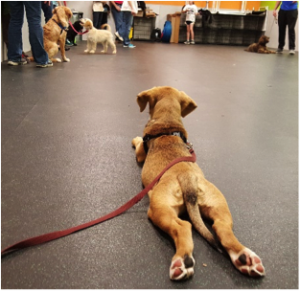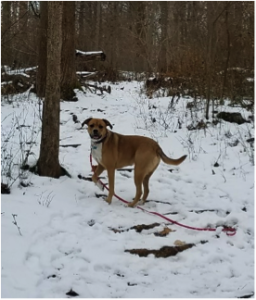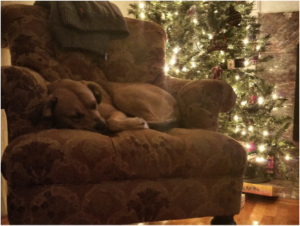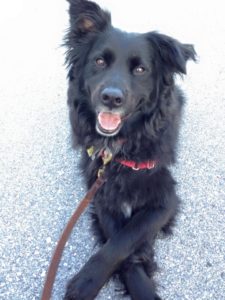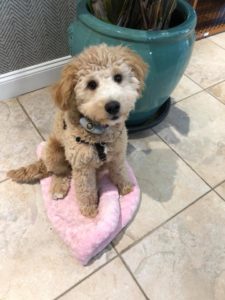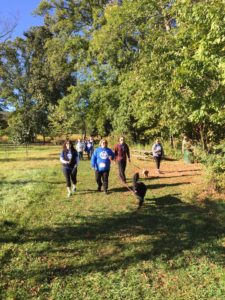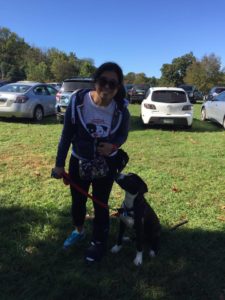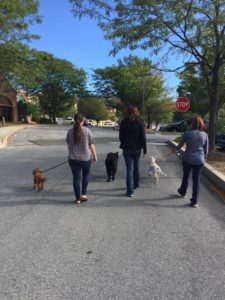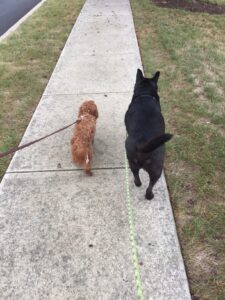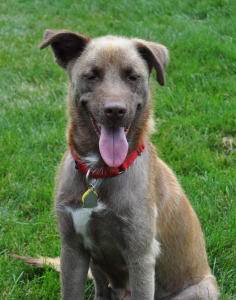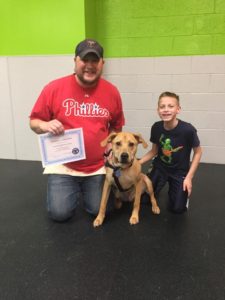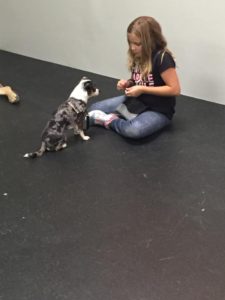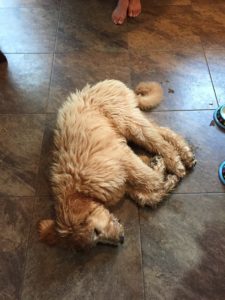Leash walking basics – does your dog walk politely on leash? Spring is fast approaching – now is a great time to brush up on your dog’s leash walking skills so you both can enjoy long walks in the warm Spring weather!
Does your dog pull on the leash and make walks uncomfortable? Do you dread the thought of walking your dog? If so, you are not alone. Many dogs struggle with leash walking – too many distractions on walks, lack of connection with the owner, the wrong gear, and lack of basic training can all contribute to dogs pulling on leash.
Leash walking basics: How to deal with distractions on the walk
 Does your dog ignore you or disregard you on walks? Do and go wherever he wants? Have you given him a reason to pay attention to you? Many dogs focus on everything but their owner, but everything but their owner is interesting on walks. It’s not that they don’t love you, it’s just that everything else is so exciting! So how do you get your dog to pay attention to you on walks?
Does your dog ignore you or disregard you on walks? Do and go wherever he wants? Have you given him a reason to pay attention to you? Many dogs focus on everything but their owner, but everything but their owner is interesting on walks. It’s not that they don’t love you, it’s just that everything else is so exciting! So how do you get your dog to pay attention to you on walks?
Be unpredictable! If your dog pulls one way say “ah ah!” and then go in the other direction. Don’t yank the leash, let the leash stay taut and then use your feet to move in the other direction. Do this every time the dogs pulls and they will soon realize that they need to pay attention to you because you are all over the place! When doing this, and your dog joins you at your side again, be generose with praise. A happy “good dog!” will help your dog get the idea that staying with you is a great thing. You can also punctuate the “good dog!” with a tasty treat for super fast attention.
Leash walking basics: Reward your dog for being at your side
It is amazing how many dogs figure out where to be when their walking buddy delivers the occasional tasty treat (or more than occasional in the beginning – a treat for every step may be needed for completely green polite leash walkers). Think of this exercise as rewarding your dog for being in the place you want him to be. It isn’t a forever thing either – but it IS worth working on for a few minutes every day to help your dog get the hang of where they are supposed to be (and who should be paying attention to) on walks.
Leash walking basics: Walking gear we recommend
A 6 foot leash is a must for a pleasant dog walk. Don’t use a retractable leash ever on a walk. Retractable leashes teach the opposite of polite walking – dogs have to pull to make the leash work and there is constant tension on leash – neither of which we want! I also do not recommend a short leash. The walk should be fun for the dog and you. Occasional sniffing and exploring is a great reward for polite leash walking. A 6 foot leash is great for this!
Sometimes dogs need some additional help to not pull. Our favorite harness is the Freedom No Pull Harness. This harness is well made, doesn’t change the dog’s natural gait, is padded and comfy, and helps deter pulling in a humane way. If your dog is much larger than you and a puller, a serious puller, or you feel need extra control, a Gentle Leader or Halti is a good option. If you aren’t sure how to get started with one, ask a trainer to help you. We don’t use or recommend prong, choke or pinch collars.
Basic training can help with walking behavior too
A dog who knows how to sit, lay down, stay, touch, and watch (make and keep eye contact) can be easier to manage on a walk. A sitting dog isn’t lunging excitedly at other dogs. A dog looking into his owner’s eyes isn’t eyeing up a squirrel. A dog doing a stay at a curb isn’t running into traffic. Doing obedience on walks is also a great way to get twice the bang for your buck in terms energy drain on a walk – thinking dogs become tired dogs.
Ready to head out for a great walk? See you on the trail or in the neighborhood! Here are come more tips for a great dog walk!
Looking for new places to walk your dog? Sussex County has great dog friendly parks!
Pepper’s Paws, LLC provides in home dog training and behavior consultations for basic manners, behavior problems, and fear aggression in Rehoboth Beach, DE. We also offer Zoom dog training lessons for people who are not in our service area.
Head trainer Deb Murray, is Certified Canine Behavior Consultant (CBCC-KA) and Certified Professional Dog Training (CPDT-KA) by the Certification Council of Professional Dog Trainers, a Fear Free Certified Trainer, an AKC Evaluator, and a Distinguished Graduate and Mentor Trainer for the Catch Canine Academy.
As an Amazon Associate I earn from qualifying purchases.
